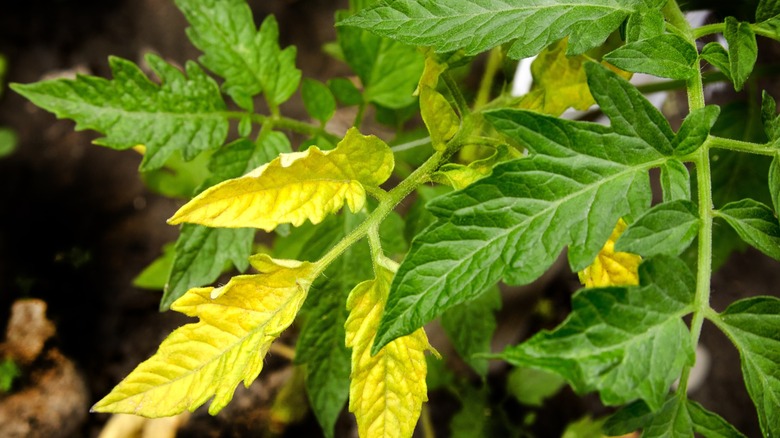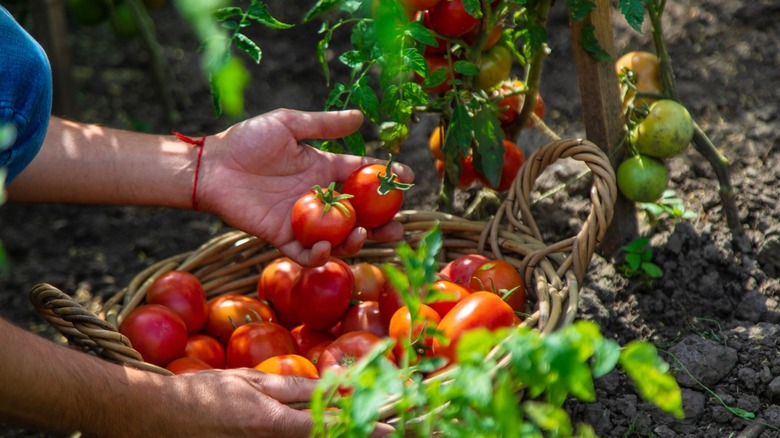Here's Why Your Tomato Leaves Are Turning Yellow In Your Garden
We may receive a commission on purchases made from links.
Amateur gardening can be daunting, from learning basics about what and when to plant for your geographic zone to more esoteric wisdom like the clever reason to plant basil and tomato together in your garden so they mutually thrive. We've often seen those social media ads for apps where you snap a picture of your garden plants and are instantly told what's wrong with your baby and how to fix it — usually something dubious like watering with paprika water or milk. In reality, you don't need a dedicated app to tell you what's wrong with that tomato plant near your basil, as its leaves are already very expressive.
There's nothing like the promise of sun-warmed, juicy tomatoes fresh off the vine or simmered in a homemade pasta sauce that inspires first-time gardeners but that doesn't necessarily mean these plants are hassle-free. If your tomato plant's leaves are yellowing, you might be rightfully alarmed and clued into the fact that it isn't at optimum health, but clueless about what caused the issue.
Some of the problems that can cause yellow tomato leaves are easily remedied, while others can be signs of a bigger problem. Overwatering and a lack of nutrients are two culprits that can be turned around as long as you catch them early on, while illness and infestation can be trickier. It's important to look closely at the affected leaves, as the pattern of yellowing may give you some clues about what your tomatoes are trying to tell you.
You can prevent and fix most yellow leaves
All plants need water, but knowing how often you should water your veggie garden can be confusing, as different factors affect watering needs. If your tomato plant's leaves are yellow, the roots may be starting to rot from too much of a good thing. Instead of adhering to an arbitrary watering schedule, pay attention to the soil. Only water when the dirt feels dry after you've pushed your finger about two inches into the soil.
Your tomatoes also require significant fertilizers to supplement nutrients in the soil. A soil testing kit can give you the most complete rundown on what your soil lacks, but looking at the specific yellowing on the tomato leaves can be a clue. For instance, yellow leaves with green veins are a telltale sign of insufficient magnesium. Fertilizing can be as simple as purchasing a commercial product specifically for tomatoes and, along with checking watering habits, should be your first troubleshooting steps against yellowing.
Unfortunately, sometimes yellow leaves mean that your plant has a disease or parasite. By the time you figure that out, the tomatoes may be past the point of saving. While it may be too late for your current sick plants, there are steps you can take to lessen the risk of illness in the future: water only the roots of plants and not the fruit or leaves, and make sure your tomato plants have plenty of room to "breathe" by planting them sufficiently far apart.

